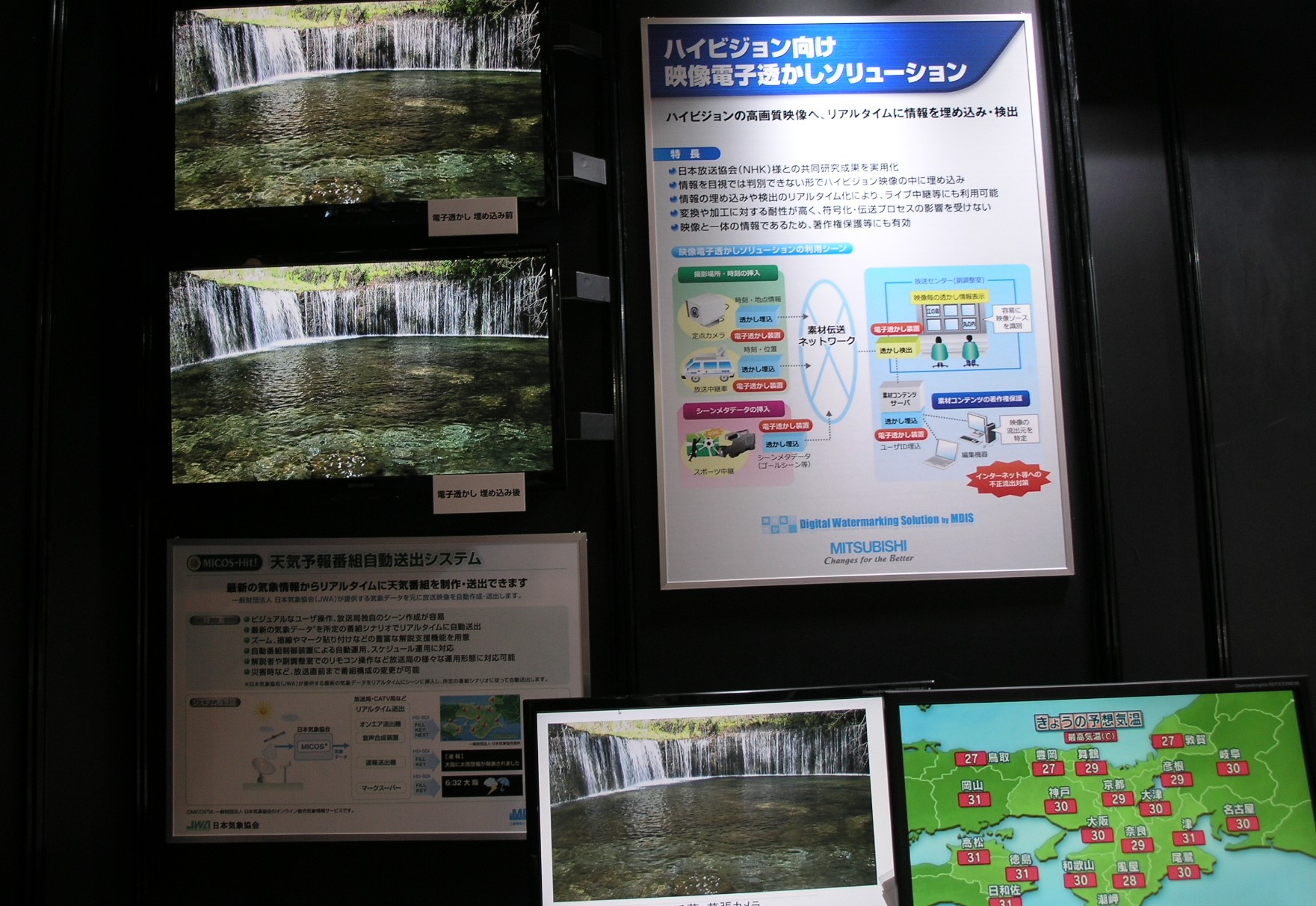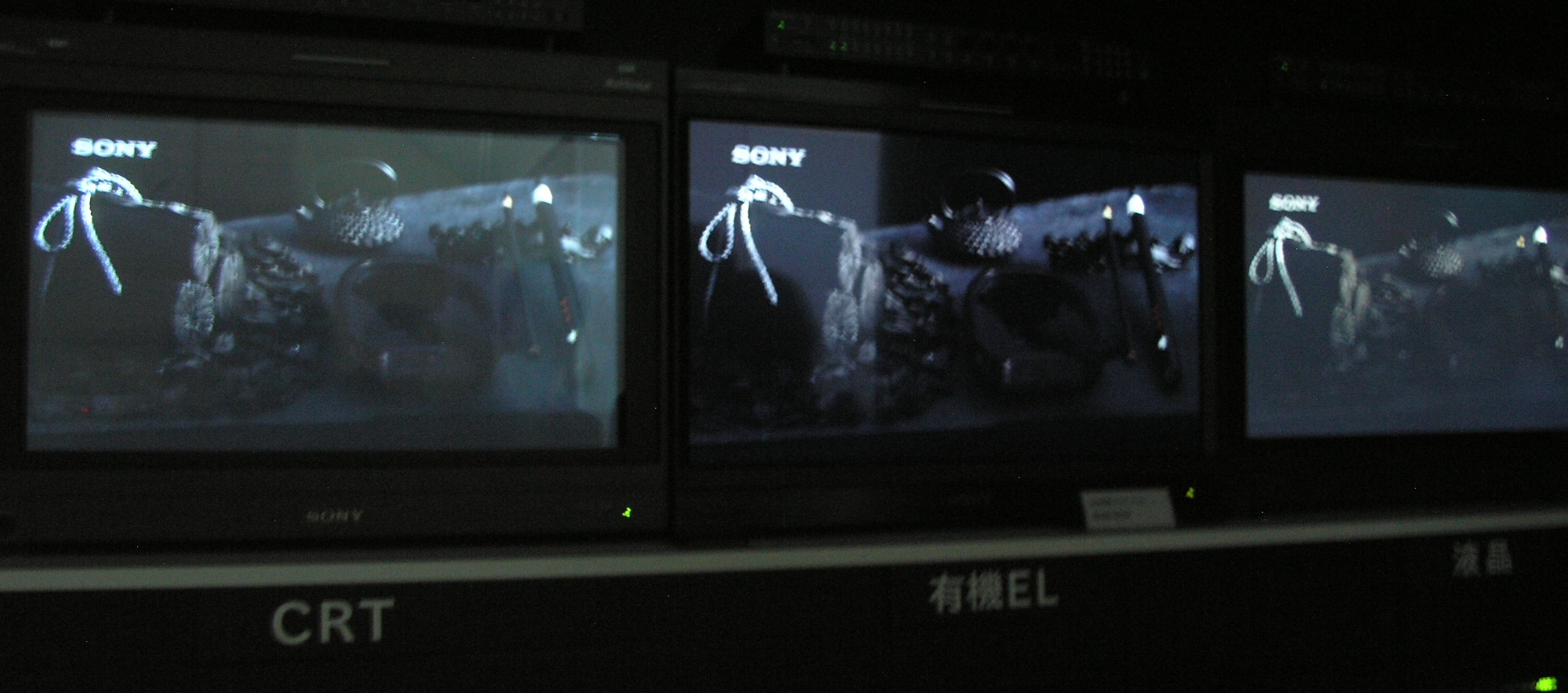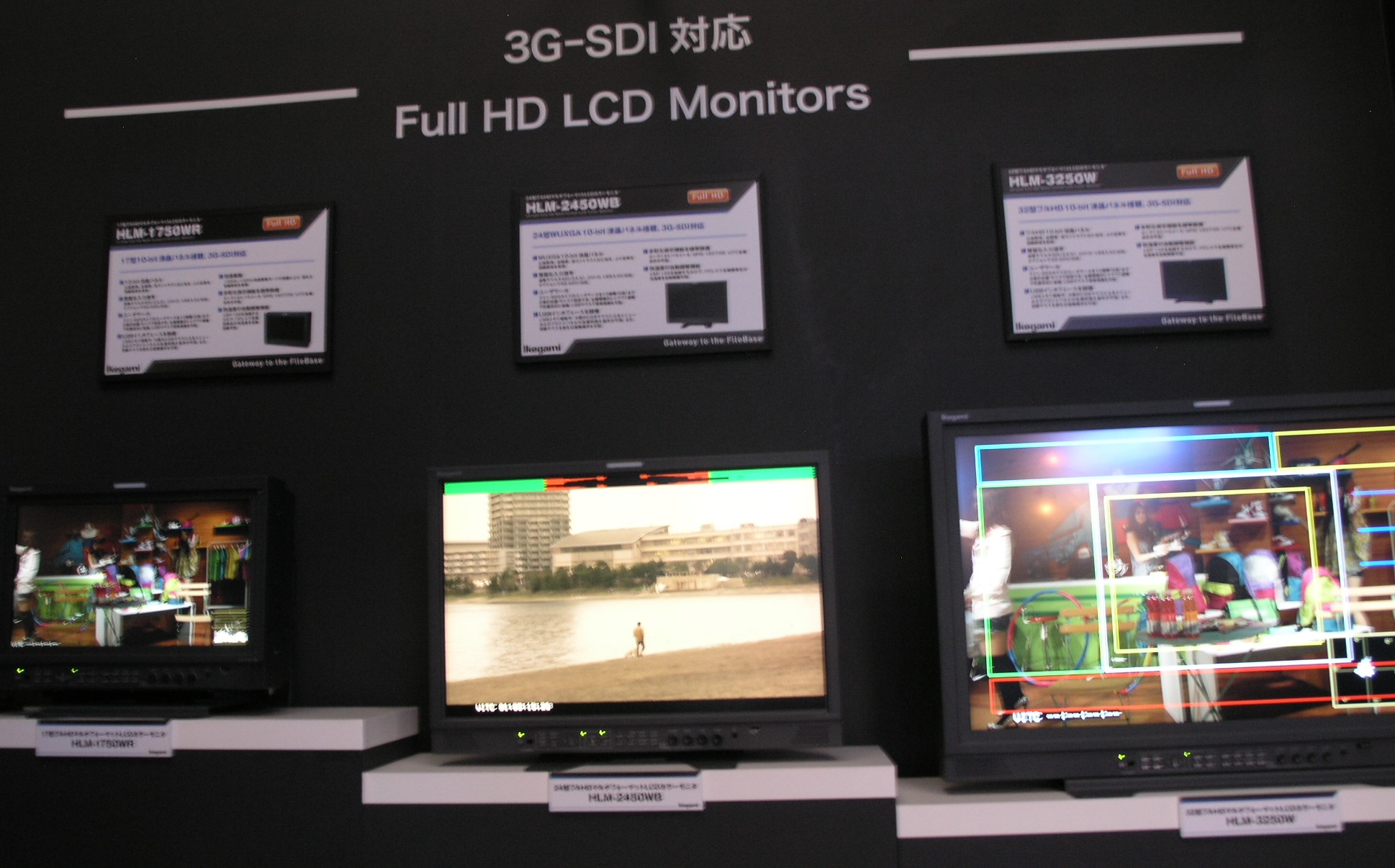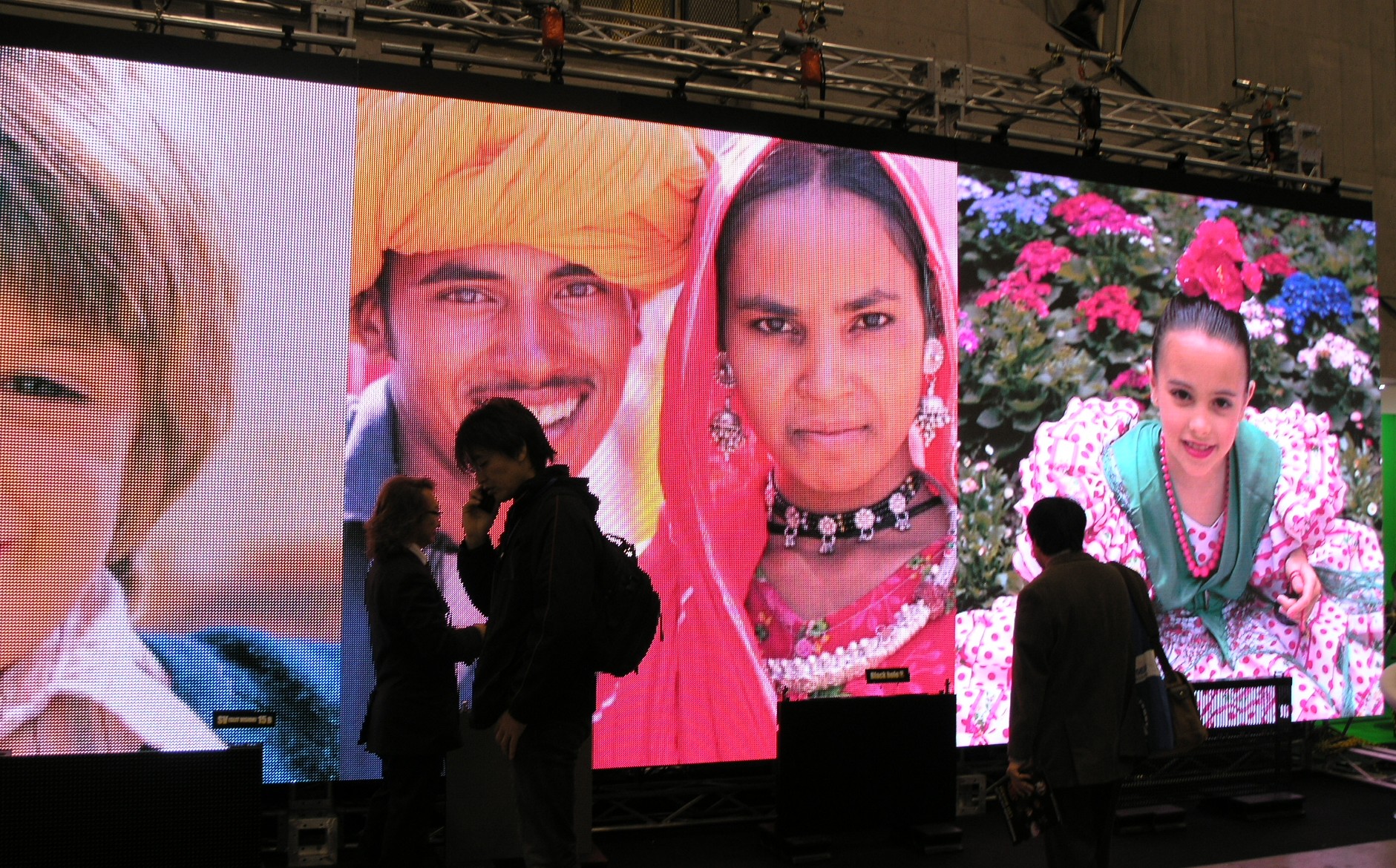My observations at Inter BEE 2011 (Part 4): Encoding Technology, Video Monitors and Display Trends
2011.12.12 UP
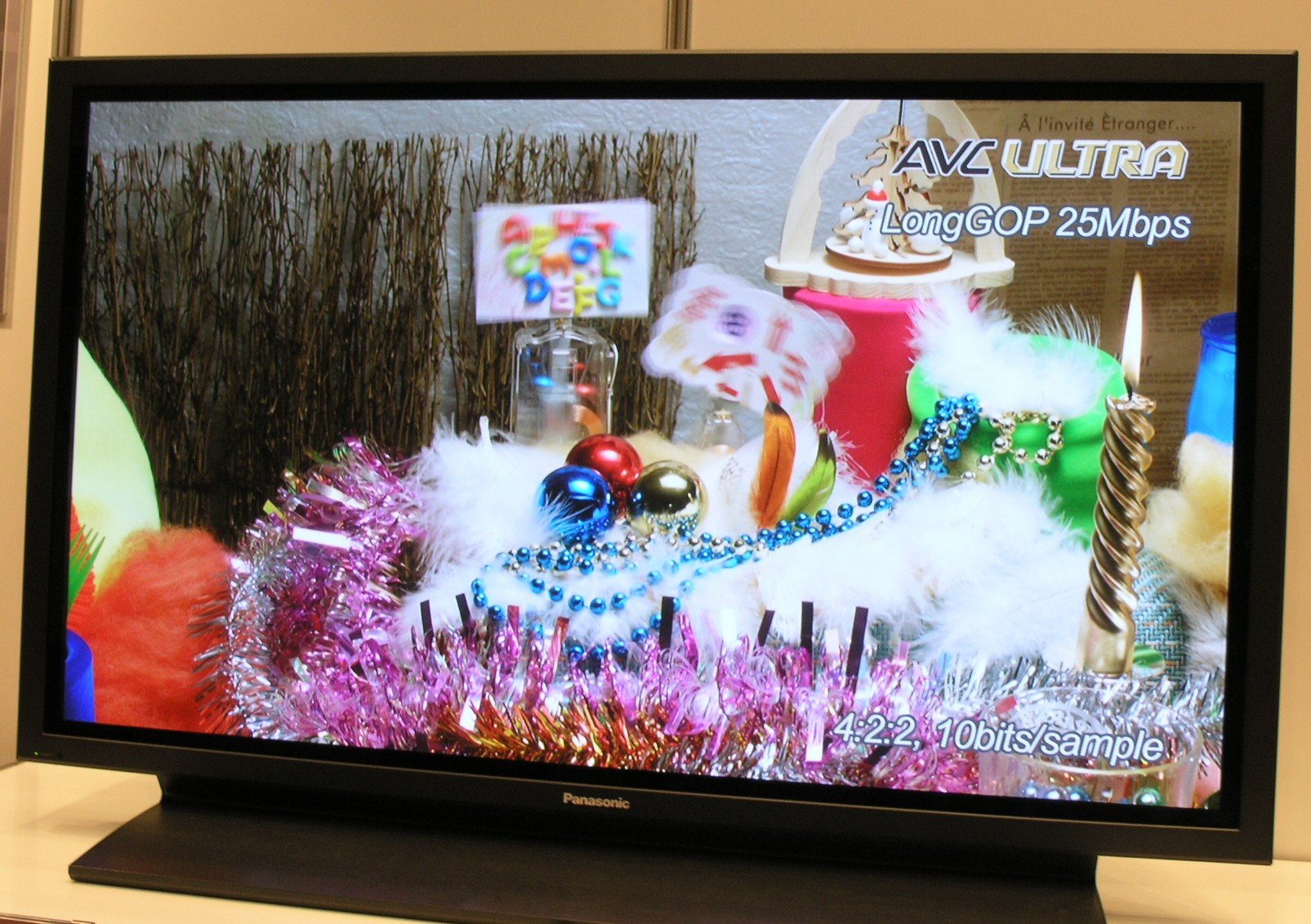
In Part 1, I covered individual events and the overall unique state of things at this year's Inter BEE compared to a typical year. In Part 2, I discussed the diversification and multi-polarization of cameras to keep up with the many developments in video media, while in Part 3, I talked about the technological trends in file-based content production and delivery. In this issue, I want to take a look at encoding technology, the foundation for content creation systems and filming in the digital era, as well as high definition advances and trends in displays that reliably monitor and manage video, and those that display high quality content.
1) Trends in video encoding and related technologies
File-based production systems continue to advance to meet the full-fledged digital age, from content creation to broadcasting and archiving, and network development. The key to all of this is encoding technology, which is growing and advancing at a remarkable pace. A wide variety of software and systems featuring this technology were exhibited at this year’s Inter BEE.
Panasonic advocated AVC Ultra, their new H.264/AVC series of codecs. Based on their previous AVC-Intra100/50, it is comprised of scalable high resolution "AVC-Intra4:4:4" and "AVC-Intra 200" codecs, the "AVC-Long G," a cost-conscious codec for business use, and the "AVC-Proxy" for use with low bit rate video. They used split-screen on multiple high resolution displays to allow viewers to compare and evaluate image quality based on each codec.
NEC displayed their H.264 encoder, which combines the low latency and high image quality of previous versions into a new, lightweight package. They showed a comparison between simulation images produced by the HEVC codec and those by the old H.264 one. HEVC (High Efficiency Video Coding H.265) is a next generation compression technology which is currently under development by ISO/IEC. NEC also displayed a completely different, ultra high resolution technology that increases resolution by reconstructing video from multiple frames, however Toshiba was also exhibiting a similar kind of technology. Fujitsu showed videos using video transmission equipment that utilize next-gen codecs.
Mitsubishi Electric has displayed next-gen, high-compression encoding technologies in the past, but this time they showed a digital watermarking system that was co-developed with NHK and based on a different concept. Digital watermarking is generally used for copyright protection, illegal copy prevention, and for anti-piracy measures. However this method also embeds other relevant information into externally relayed video without affecting the video itself, including date/time, place name, and shooting location, so that the receiver can accurately discern authenticity in real time. By adjusting the watermark’s intensity and location to display dimly when it would otherwise be easy to see, and strongly when it would not, it becomes indiscernible to the naked eye. This allows necessary information to be embedded without harming picture quality - a very useful broadcasting technology from the looks of it.
NHK Engineering Services developed a system that compresses and records JPEG 2000-based 4K video, and is apparently being used in a variety of fields. Together with Belgium’s intoPIX, they developed a “4K outdoor acquisition system” that is equipped with intoPIX’s single-chip JPEG2000 FPGA (Field Programmable Gate Array), and displayed it at each of their booths this year. The system can compress 4K video without segmenting the screen, and is small and compact with high mobility.
NTT Electronics exhibited a new, lower latency successor to its H.264 encoder/decoder, 4:2:2-supported product. To allow comparison and evaluation, they showed a video encoded and decoded using the same system next to a streaming, unencoded video. NTT also performed a demonstration using an encoder that supports high quality 3D video without using the side-by-side format, and supports simultaneous, full HD encoding using two bit rates. NTT-AT displayed a small-sized codec board that encodes 4K video to JPEG 2000 in real time and delivers over an IP network. This meets a wide variety of needs, such as delivering 4K video content to movie theaters, or remote-location production collaborations.
KDDI R&D LABS displayed the Vista Finder-Mx, a portable video transmission system with improved functionality that can send high definition video data from anywhere in the world. In the past, transmission and receiving terminals could only link up one to one, but it is now possible to receive up to 12ch simultaneous feeds and large scale delivery via a relay server. Simple transmissions with devices such as smart phones and tablets can now also be supported. In the 8K theater at their booth, they showed an ultra high definition video transmitted from the NICT Kashima Space Technology Center via their WINDS satellite named "Kizuna." The video was compressed from ultra high definition to an ultra-low 70Mbps bit rate using H.264's scalable coding. K-WILL, a company related to KDDI R&D, displayed their second generation A/V automatic monitoring system, the "single stimulus error detection system," which has improved archiving, transmission and retransmission functionality.
2) Trends in display technology.
Sony has been developing OLED panels for many years, and has shown them at Inter BEE and CEATEC events before. However this year, they displayed their "TRIMASTER" EL series – the successor to CRTs for master monitoring. Boasting sizes of 17" and 25", they deliver full HD RGB with 10-bit drivers. Sony did a comparison using same-size CRT and LCD models in a dark room, which produced high contrasts with good black reproduction, vivid color reproduction at various intensity levels, and excellent readability with text scrolling, etc.
Ikegami Tsushinki, a company with an established record of providing video monitors to broadcasters and other groups, displayed their new HLM series of 32", 24", and 17" LCD monitors which support high resolution, full HD and 3G-SD, as well as a multi-format LCD model that comes in either 15" or 9". They also showed 9" and 2" LCD camera viewfinders, plus a 7.4" OLED model. Further, they displayed FED monitors (the much-anticipated replacement for CRT master monitoring) along side LCD monitors, but it still seems like the actual transition to full HD is still further down the road.
ASTRODESIGN exhibited its line of QFHD (3840x2160) LCD monitors for 4K video use, which feature 3G-SD support and come in sizes including 60", 56", 36", and 28". KEISOKU GIKEN showed off its 4K 3D display, which was jointly developed with Redrover in Korea. The system uses two QFHD IPS LCD panels in a half mirror configuration to combine and construct images.
Dolby, who has also been active recently in the world of video, developed a professional reference monitor that checks the accuracy of color reproduction and has shown it off at various events, including NAB. The LCD panel it uses regulates RGB LED backlight frame by frame, covering a wide dynamic range and achieving deep, black levels and high color contrasts across a full gamut of colors. This year they did not have their own booth, instead displaying the monitor at the NAC and KEISOKU GIKEN booths.
The 3D consortium, which includes members such as NICT and NHK related enterprises, the NTT group, commercial broadcasters, universities, research centers and electrical and optical device makers, exhibited a variety of things. Chukyo Television Broadcasting and Nagoya University displayed a multi-perspective recording system, and VMJ, who does 3D-related hardware/software development and content production, showed their technology for converting a 2-view image into an 8-view one on a 40" glasses-free LCD display. Newsightjapan's glasses-free 3D display is full HD, uses a parallax barrier method, and has a screen size of 82" - making it one of the largest glasses-free 3D displays in the world.
In an entirely different corner, Strawberry Media Arts had on exhibit three types of large (around 150") LED displays with pixel pitches of 6.25, 9.375 and 12.5mm. Given their high output, low reflectivity and light weight, it is said they can be equipped to indoor or outdoor signboards, vehicles, and used for events and digital signage.
Takehisa Ishida, PhD. Video technology journalist



